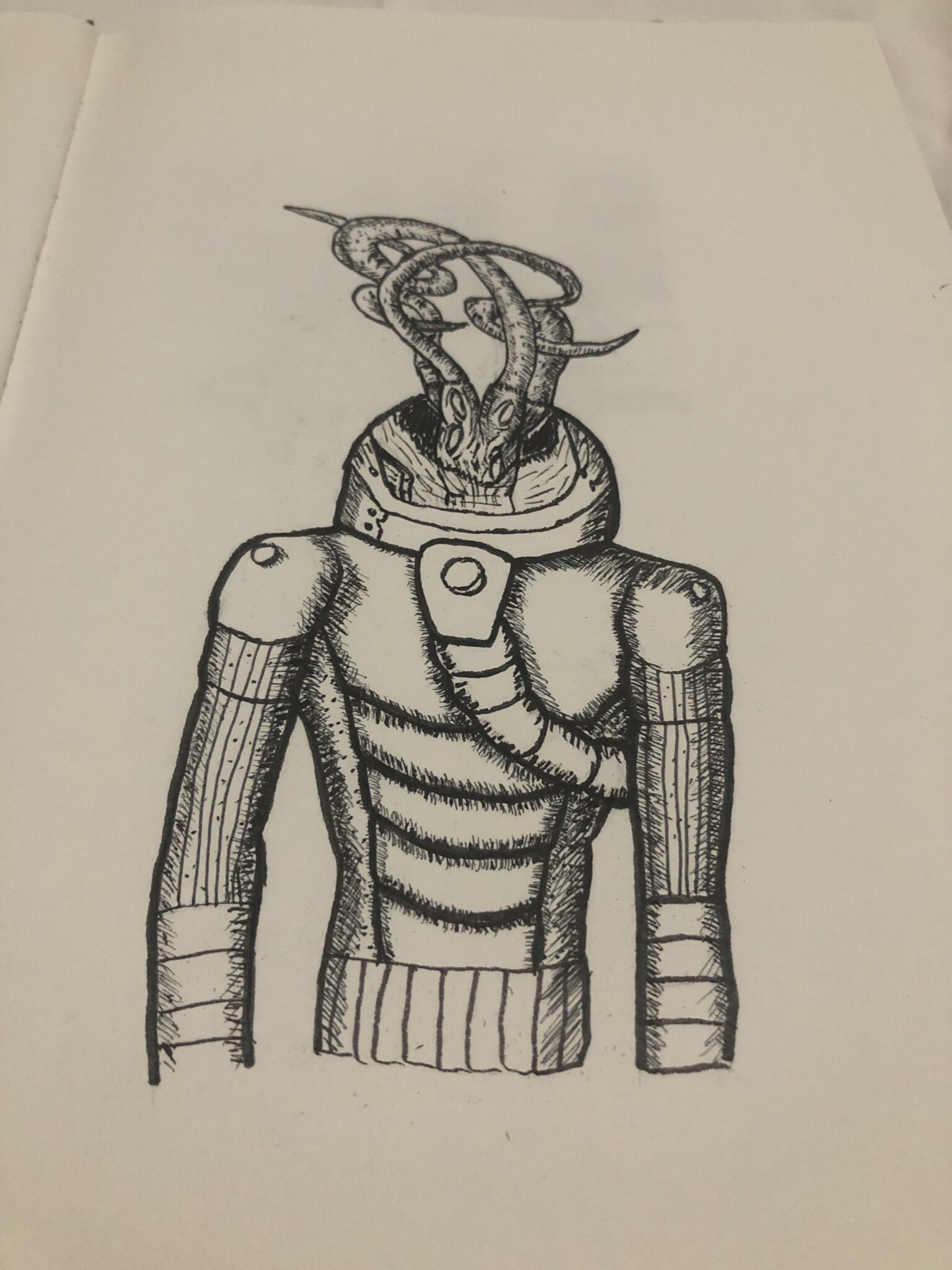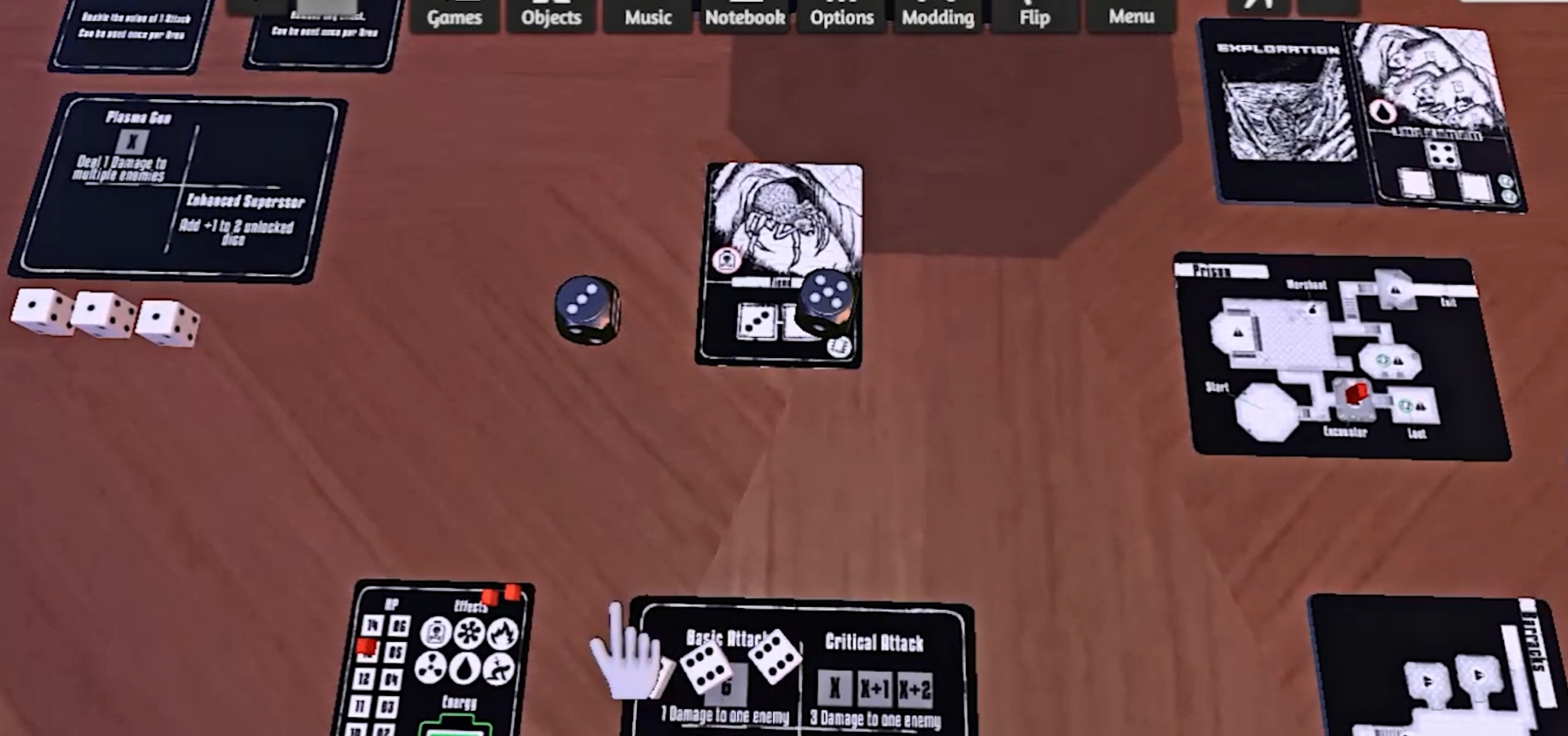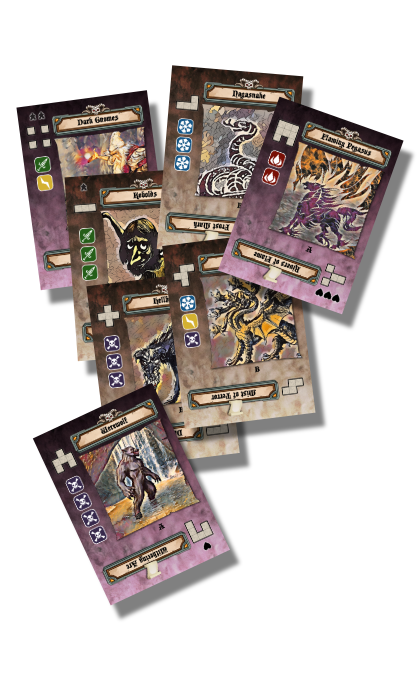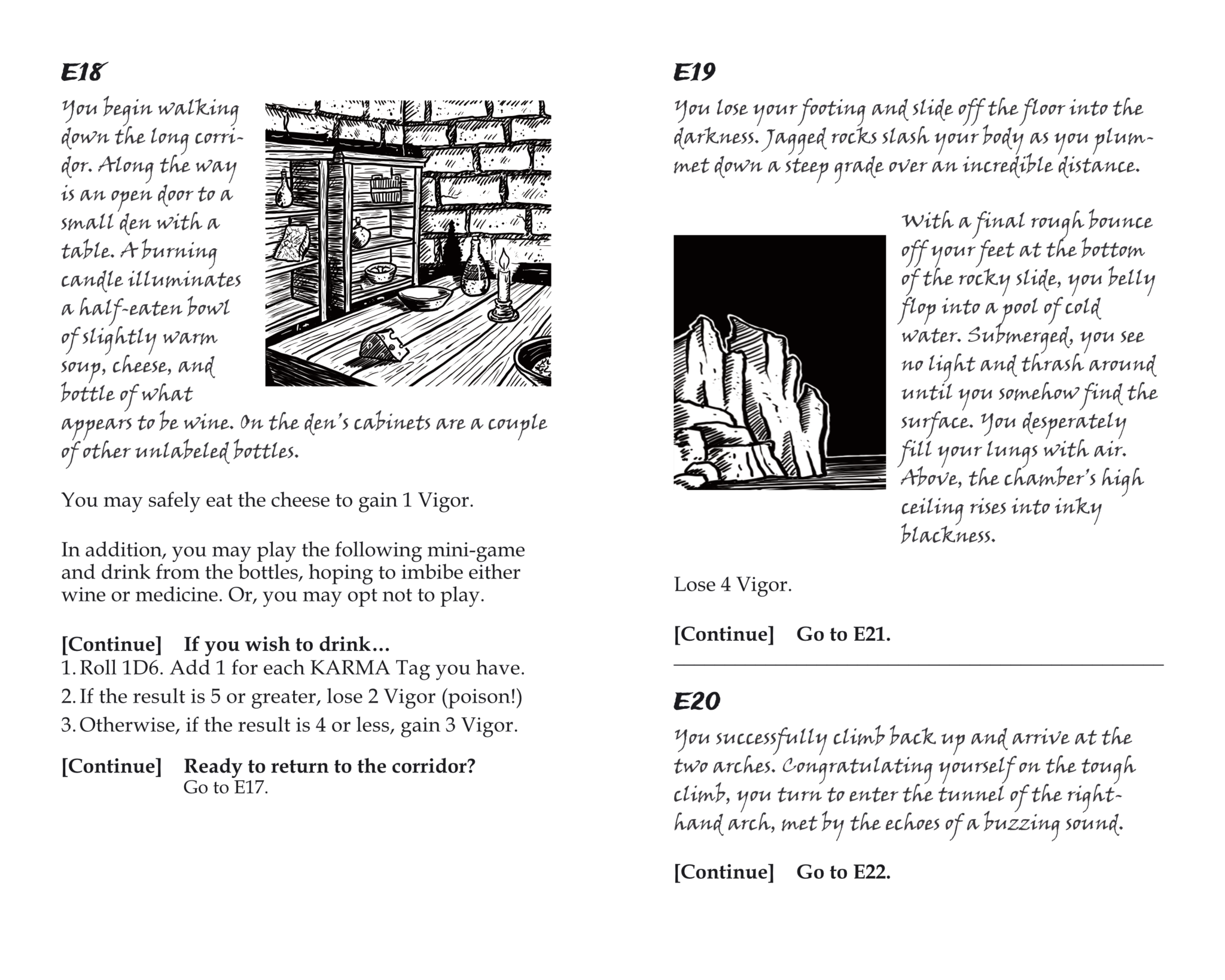Ali Mahmood has illustrated some of the cards for his new game, Pocket Sci Fi. His art style has some similarities to the awesome work of Jason Glover, whose art we are using in a choose-your-own-misadventure horror game.
The road to Pocket Sci Fi
When Ali and I met, he was designing a game for which he hired a fairly decent artist from Fiverrr. But each illustration cost enough that it wasn’t realistically feasible to publish a game with many cards.
For our recent collaboration, Dungeon Maker Deluxe, Ali and I split the burden of providing art. He paid an artist to commission cover art, which he used on his highly successful Kickstarter campaign. I was responsible for creating the card art, for which I adapted existing public domain art.
Our ongoing collaboration, What Lies Beneath, is a choose-your-own misadventure game. It includes innovative mechanics, difficult choices, leveling of your character, and an overarching narrative structure (giving the game some resemblance to a series of books from our childhood). For that game, we’re using the awesome free line art that Jason Glover at Grey Gnome has made available for public use. However, we’re on track to completely tap out these free resources for the game’s 300-ish Encounters.
Pocket Sci Fi
And this brings us to Ali’s latest project, Pocket Sci Fi. Although early prototypes used a bit of Jason’s sci-fi content, Ali is moving toward illustrating the game himself. (Interested in playtesting Pocket Sci Fi? Sign up here.)
I really like where the art is headed. Ali sent me 3 images included in the current prototype. He generally sketches his work on paper, then photographs it for adaptation and incorporation into the game as a digital asset.
The first depicts some sort of tentacle freak in a space suit. It’s frankly kind of disturbing. The game is about trying to escape a broken space station. This weird monster thing is exactly the sort of thing that you’re trying to escape.
The second depicts another disgusting creature with its head sucking the life out of a victim. I enjoy the consistency with which Ali hatches edges to depict form. The eyes of the victim also convey a debilitated feeling, which is much better than a lot of game art that I’ve seen from far more famous artists.


The final image depicts the bartender at the space-station watering hole. He doesn’t look pleased, does he? Reptilian eyebrows and frown: again, with the emotions! I also especially enjoy the rim lighting that highlights the edges of the bartender’s face and shoulders.

Ali’s work resembles Jason’s in a few ways:
- Line art (obviously)
- Shading by hatching rather than volume shading
- Use of fully dark blocks, in scenes, to develop contrast (a hint of chiaroscuro)
- White strokes along the exterior of subjects, when set against dark blocks (for contrast)
- Inclusion of grotesque creatures among the subjects
- Primarily zero-point perspective (I’ve seen some 1-point from Jason)
Ali’s work differs from Jason’s in a few ways, some of which reduce the amount of ink required to print Ali’s games — at least in low-ink versions of the game, rather than the versions with black cards, as in the picture at the top of this article. Reduction of ink usage is a judicious choice, considering that Ali primarily targets the PNP market. These changes also reduce the amount of time required to create illustrations–again, a judicious choice, considering that PNP players don’t pay a lot for such games.
- Smaller, less ink-thirsty dark blocks than in Jason’s work
- Less use of detailed brick/stone textures than in Jason’s work
- Less use of shading to indicate lighting than in Jason’s work
Game designers can illustrate
Ali is following the path of many designers who have illustrated their prototypes. In fact, quite a few game designers are also professional artists (and/or graphic designers) whose work is featured in published games. Examples include Dann May, Greg May, Ryan Laukat, Jason Glover, Todd Sanders, Andrew Bosley, Vincent Dutrait, and Ian O’Toole.
This isn’t to say that it’s typical for designers to become professional illustrators but, rather, that it’s a reasonable goal for somebody who’s willing to put the time into mastering both disciplines. Which, in my own experience, is a ton of time. There’s no shortcut to expertise.
Ali happens to focus on the PNP market, which means that his art skills can eventually meet and exceed the requirements to sell games. Early playtesters have commented favorably on some of Ali’s drawings, which he continues to improve. I have no doubt that Ali will get this game’s art where he wants it to be, and players will consider the final art at least as positively as they rate the game’s mechanisms.
Interested in playtesting Pocket Sci Fi? Sign up here.
Notes to self
- Note the really consistent hatching in some areas of Ali’s art and Jason’s. Aspirational?
- Is that a face on the jar of straws, top-left of the last image above? Freaky. Keep in mind for similar situations.
- Likewise, note the puncture holes in arms of victim in 2nd picture, for consideration in similar situations.
- Moderate use of rivets in 1st and 3rd images (suit and signage, respectively).
- Most of all, note the emotions, which carry the load of bringing the art to life.




